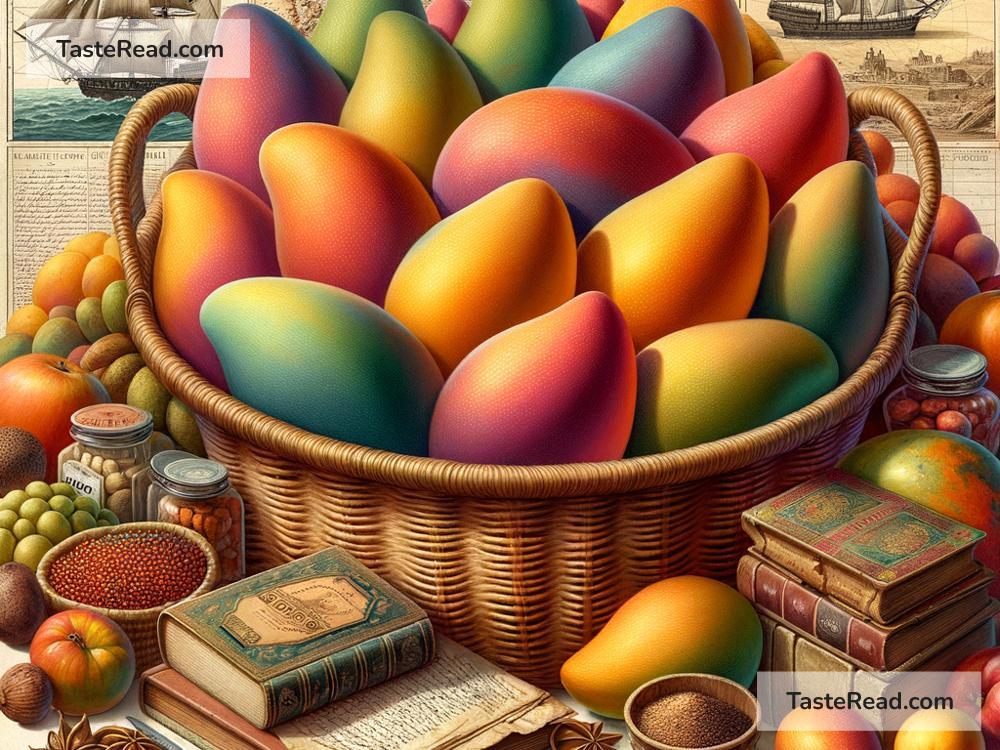The Surprising History of Mangoes: A Journey Through Time
Mangoes are loved by millions of people around the world. These sweet and juicy fruits are perfect for snacks, desserts, and even drinks. But have you ever wondered where mangoes came from? Their history is full of surprises, involving royal palaces, epic travels, and global trade. Let’s dive into the fascinating story of mangoes!
Where Mangoes Began
Mangoes originated in South Asia. Historians believe they were first grown in India and Southeast Asia over 4,000 years ago. In fact, mango trees are one of the oldest cultivated fruit trees in the world! They were likely first found growing wild in the forests of northeast India and Myanmar (Burma). Ancient communities discovered their delicious taste and started planting them for farming.
In India, mangoes weren’t just a fruit; they were symbolic and deeply valued. They were seen as a gift from nature and became a part of Indian religion, art, and culture. Mango leaves were used in Hindu rituals, and the fruit was often mentioned in ancient Indian texts like the Vedas, which date back thousands of years.
Royal Fruit of Kings and Queens
Mangoes became even more special during the reign of Indian kings and emperors. Rulers valued mangoes so much that they had gigantic orchards filled with mango trees. Historical records suggest that the Mughal Emperor Akbar, who ruled in the 16th century, planted over 100,000 mango trees in a massive orchard in Bihar, India. This orchard was called “Lakhi Bagh,” or “The Garden of One Hundred Thousand.”
Mangoes were seen as a status symbol among royalty. The best mangoes were gifted to rulers and foreign diplomats as a mark of honor. Some emperors even had special mango varieties grown just for them!
Spreading Across the World
Mangoes eventually spread beyond South Asia, thanks to travelers, traders, and conquerors. The fruit was introduced to Persia (modern-day Iran) by Indian travelers, and from there it made its way to the Middle East. Arab traders also carried mangoes to the shores of East Africa.
When Portuguese explorers arrived in India in the 15th century, they fell in love with mangoes. They introduced the fruit to South America and the Caribbean in the 16th century, where it flourished in the tropical climate. Portuguese sailors helped spread mangoes to other parts of the world, like Southeast Asia and Africa.
Today, mangoes are grown in over 90 countries, from India and Thailand to Kenya, Brazil, and the United States. Each region has its own favorite varieties, adapted to the local environment.
Mangoes in Modern Times
Mangoes are now one of the most popular fruits on the planet. India remains the world’s largest producer of mangoes, growing more than 18 million tons each year. Other top producers include Indonesia, China, Thailand, and Mexico.
What’s amazing is how many different types of mangoes exist today. There are over 500 varieties of mangoes worldwide! In India alone, popular varieties include Alphonso, Kesar, and Dussehri, while in Southeast Asia, fragrant mangoes like Nam Dok Mai are cherished.
But mangoes are not just about taste—they also have nutritional benefits. They are packed with vitamins A, C, and E, as well as fiber and antioxidants. Many people call mangoes a “superfruit” because they improve digestion, boost immunity, and give your skin a healthy glow.
Cultural Significance of Mangoes
The love for mangoes goes beyond their flavor. In India, the mango tree is considered sacred and represents prosperity, fertility, and happiness. Mango motifs are often found in embroidery, painting, and sculptures. The famous paisley design, which originated in South Asia, is inspired by the shape of a mango!
Mangoes have even influenced literature and poetry. Many writers praised the fruit in poems, describing its sweetness and beauty. Mangoes are also celebrated in festivals, especially during the summer harvest season.
Even outside South Asia, mangoes have become a cultural icon. Many Caribbean countries, for example, host mango festivals where people enjoy mango dishes, music, and dance.
Did You Know? Fascinating Mango Facts
- Mangoes are the national fruit of India, Pakistan, and the Philippines.
- In some countries, mangoes symbolize love and friendships. Giving someone a mango is a way of expressing appreciation.
- The name “mango” comes from the Tamil word “mangai,” which became “manga” in Portuguese and later “mango” in English.
- Unripe mangoes are used to make pickles, chutneys, and even refreshing drinks like “aam panna” in India.
Conclusion
The history of mangoes is truly surprising. From ancient forests in South Asia to royal palaces and global trade routes, mangoes have traveled far and wide. For over 4,000 years, they’ve been enjoyed by people around the world, earning titles like “king of fruits.”
So, the next time you bite into a ripe mango, remember its incredible story. It’s more than a tasty treat—it’s a fruit with a history as rich and colorful as its flavor. Who knows where mangoes will go next in their journey?
What’s your favorite mango variety? Share your thoughts below—we’d love to hear about your love for this beautiful fruit!


